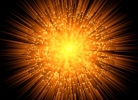LED lightbulbs access Internet to pave the way for energy saving LiFi technology
LED lightbulbs access Internet to pave the way for energy saving LiFi technology
Chinese scientists have claimed that Wi-fi connectivity from a LED lightbulb (LiFi) is now a step closer. Li-fi promises to be a cheaper and more energy-efficient technology than existing wireless radio systems.
The general availability of LED bulbs and the omnipresence of lighting infrastructure offers major energy efficiency benefits. Although millions of WiFi base stations have been installed worldwide to boost signals most of the energy is consumed by their cooling systems. The energy utilization rate of WiFi is as low as five percent. Compared with base stations, the number of lightbulbs that can be used is practically limitless and more energy efficient.
The Chinese scientists claim that a LED lightbulb with embedded microchips can produce data rates as fast as 150 megabits per second, which is speedier than the average broadband connection in China.
Chi Nan, an information technology professor with Shanghai\’s Fudan University said that experiments have shown that four computers under a one-watt LED lightbulb may be able to connect to the Internet under the principle that light can be used as a carrier instead of traditional radio frequencies, as in WiFi.
Chi Nan, who leads a LiFi research team including scientists from the Shanghai Institute of Technical Physics of the Chinese Academy of Sciences, plans to display ten sample LiFi kits at the China International Industry Fair that opens on November 5, 2013 in Shanghai.
The University of Edinburgh\’s Prof Harald Haas in the UK originally coined the term LiFi which is a type of visible light communication (VLC) technology that delivers a networked, mobile, high-speed communication solution in a similar way to WiFi. In 2011 Prof Haas demonstrated how an LED bulb equipped with signal processing technology could stream a high-definition video to a computer.
Earlier this year, the Fraunhofer Heinrich Hertz Institute expounded that data rates of up to 1Gbit/s per LED light frequency were possible in laboratory conditions.

